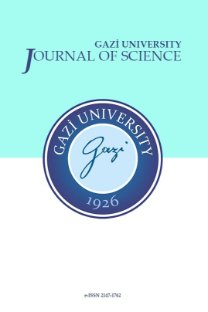Time Optimal Trajectory Generation with Obstacle Avoidance by Using Optimal Control Theory for a Wheeled Mobile Robot
Time Optimal Trajectory Generation with Obstacle Avoidance by Using Optimal Control Theory for a Wheeled Mobile Robot
___
- [1] Pandey, A., Pandey, S., Parhi, D.R., “Mobile robot navigation and obstacle avoidance techniques: A review”, International Robotics & Automation Journal, 2(3): 00022, (2017).
- [2] Spong, M. W., Hutchinson, S., Vidyasagar, M., Robot modeling and control, John Wiley & Sons, United States, (2020).
- [3] Cui, M., Sun, D., Liu, W., Zhao, M., Liao, X., “Adaptive tracking and obstacle avoidance control for mobile robots with unknown sliding”, International Journal of Advanced Robotic Systems, 9(5): 171, (2012).
- [4] Nazemizadeh, M., Rahimi, H. N., Khoiy, K.A., “Trajectory planning of mobile robots using indirect solution of optimal control method in generalized point-to-point task”, Frontiers of Mechanical Engineering, 7(1): 23-28, (2012).
- [5] Yen, C.T., Cheng, M.F., “A study of fuzzy control with ant colony algorithm used in mobile robot for shortest path planning and obstacle avoidance”, Microsystem Technologies, 24(1): 125-135, (2018).
- [6] Liu, J., Yang, J., Liu, H., Tian, X., Gao, M., “An improved ant colony algorithm for robot path planning”, Soft Computing, 21(19): 5829-5839, (2017).
- [7] Nazemizadeh, M., Mallahi Kolahi, P., “Trajectory Tracking of an Intelligent Mobile Robot on a Slope Surface using the Nonlinear Sliding Mode Control”, Mechanic of Advanced and Smart Materials, 1(1): 1-14, (2021).
- [8] Korayem, M.H., Ghobadi, N., Fathollahi Dehkordi, S., “Designing an optimal control strategy for a mobile manipulator and its application by considering the effect of uncertainties and wheel slipping”, Optimal Control Applications and Methods, 1-25, (2021).
- [9] Mallahi Kolahi, P., Mosayebi, M., “Optimal Trajectory Planning for an Industrial Mobile Robot using Optimal Control Theory”, Journal of Modern Processes in Manufacturing and Production, 10(3), 25-34, (2021).
- [10] Korayem, M.H., Nazemizadeh, M., Nohooji, H.R., “Optimal point-to-point motion planning of nonholonomic mobile robots in the presence of multiple obstacles”, Journal of the Brazilian Society of Mechanical Sciences and Engineering, 36(1): 221-232, (2014).
- [11] Wu, Y., Liu, L., Yang, Y., Dai, S., “Optimal Control Method for Robot-Tracking Based on Control-Lyapunov-Function”, IEEE Access, 7: 90565-90573, (2019).
- [12] Klancar, G., Zdesar, A., Blazic, S., Skrjanc, I., “Wheeled mobile robotics: from fundamentals towards autonomous systems”, Butterworth-Heinemann, United Kingdom, (2017).
- [13] Kirk, D.E., “Optimal control theory: an introduction”, Courier Corporation, Prentice Hall, New York, (1994).
- [14] Wang, X., “Solving optimal control problems with MATLAB: Indirect methods”, Industrial and Systems Engineering Department., NCSU, Raleigh, NC, 27695, (2009).
- Yayın Aralığı: 4
- Başlangıç: 1988
- Yayıncı: Gazi Üniversitesi, Fen Bilimleri Enstitüsü
Pei JU, Dongzhuang TİAN, Hongjie TİAN
Nursel GÜL, Nuri YİĞİT, Fulya SAYGILI YİĞİT, Eda YAZICI ÖZÇELİK, Hakan ESKİZENGİN
IoT Based Humidity and Temperature Control System for Smart Warehouse
Electromagnetic Band Gap Based Via-less Jeans Patch Antenna for 5.5GHz WiMAX Application
Sangeeta SHEKHAWAT, Sanjay Kumar SİNGH, Sudhanshu SİNGH, Ashutosh TRİPATHİ
Meryem YALÇINKAYA, Burak BİRGÖREN
Spirituality of Light in the Mosque by Exploring Iranian-Islamic Architectural Styles
Mahya GHOUCHANİ, Mohammad TAJİ, Amir Hassan YAGHOUBİ ROSHAN
Examination of Fiber Reinforced Composite Materials
Berkay KARACOR, Mustafa ÖZCANLI
Modelling and Interpreting of Exponentiated Stretched Exponential Distribution
Abdallah YASSİN, Ebru GÜNİSTER
On Quaternions with Higher Order Jacobsthal Numbers Components
